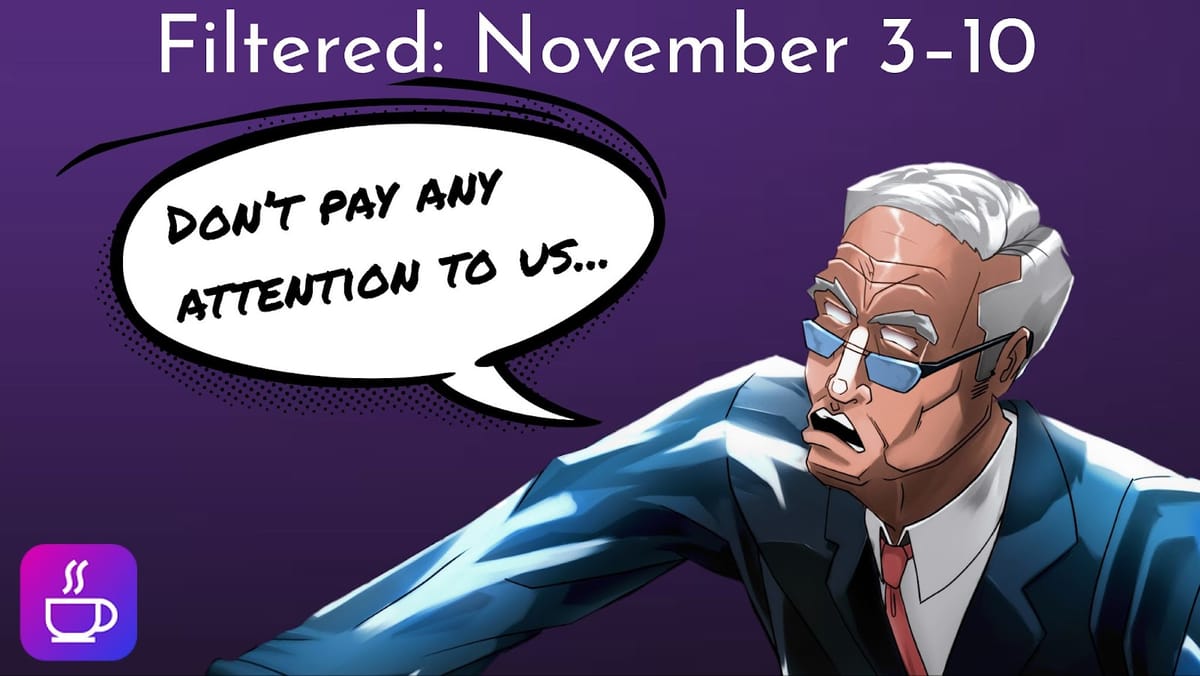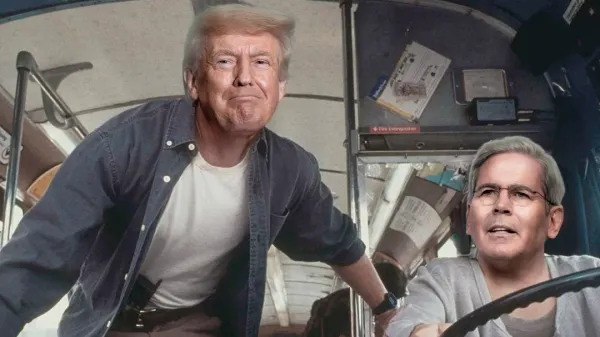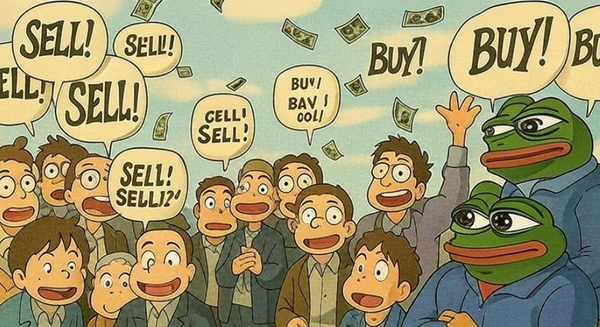The Fed’s Regime Change Is Already Happening
Filtered: Nov. 3 – 10

Welcome to the new version of Filtered.
For those of you who don’t know, Espresso isn’t the only place where our rotating crew of writers (including yours truly) share their insights. They also get the chance to dive even deeper on their favorite topics (and offer some trade ideas) on our podcast Alpha Bites.
And while it started out as a once-a-week show, we’re starting to publish more often with more diverse content. So we thought we’d start regularly sharing the highlights of each episode here in Espresso.
And you can find links to each episode published since the last Filtered post at the bottom.
Enjoy.
If you look at most people’s calendars, you’ll see only two dates circled from now until the end of the year: Thanksgiving and Christmas.
But if you glance at most investors’ calendars, you’ll see another set of dates circled: December 12 and 13 – the next Federal Reserve rate meeting.
As followers of the market, we’ve had to hang on every word of Fed Chair Jerome Powell and his subordinates for the past few years as they’ve pushed rates from near-zero to over 5%. (I may have even tried to count how many times Powell blinked during one of his speeches to see if he was giving anything else away.)
That rate hiking regime appears to be slowing down, as the Fed kept rates unchanged at its most recent meeting last week. But the simple truth is that, whether it’s going up, down, or sideways, no force has more impact on both traditional and crypto markets than the fed funds interest rate.
But maybe we won’t have to circle any of those meetings in our calendars for next year.
In this week’s Alpha Bites podcast, the xChanging Good crew examined whether there’s a “regime change” happening in the markets… and whether that could mean the Fed’s influence won’t be as powerful as it’s been since the pandemic.
And that’s good news for Bitcoin (BTC)...especially since we already have the halving marked on our calendars for next April.
Here’s how I explained it:
It's more about correlation. When the Fed is using a heavy hand in the market, assets become heavily correlated. [Quantitative easing] was insane, right? We've never seen anything like that. They were trying to front run everything towards the market, because 2007 and 2008 taught us that the Fed did not act quick enough.
And so this time around [during the pandemic], they acted as quickly as they possibly could and likely overreacted. And of course, those are a lot of the inflation issues that we see today.
But the point being is when they raised the rates, that was a heavy-handed approach to the market. And that's why we saw a lot of correlation across the board now with their hand essentially getting out of the market for a little bit less than before. They're still heavily involved, but not as to the extent that they would be for the past few years.
This allows assets to essentially go find their own direction and have that correlation come down.
...
And so, if we're going to have an environment where assets can essentially move in a less correlated manner and you've got the halving coming up, the timing is great. And so Bitcoin is going to essentially have its reins removed. It can finally run and really showcase what it can do.
I didn’t hog all the airtime on this topic. My colleagues J.J., Kodi, Ray, and our host Marconi got in on the discussion, too. J.J. and Ray examined what technical patterns they’re eyeing as this regime change takes shape...and Kodi told us what to look for from stablecoins while this shift plays out. You can listen to the full episode here.
And if we’ve managed to convince you that BTC is about to head higher, your first thought might go to which altcoins will benefit the most.
That’s why I encourage you to listen in on our Beta Plays segment every week, where we break down an altcoin pick from a variety of angles and examine how it compares to the biggest altcoin there is, Ethereum (ETH).
As I mentioned last Friday, our latest pick was Solana (SOL). Despite its association with FTX, SOL has been on a tear this year, enough to make some wonder whether it can outperform in the next bull market.
The whole team had their thoughts, but I’ll share J.J.’s take here on how SOL compares to ETH in the last bear cycle:
I saw a post recently by Chris Burniske, a fund manager, and he was comparing [SOL] to Ethereum in 2018 to 2020.
So when Ethereum was in that bear cycle, there was so much doubt and uncertainty surrounding ETH. There was a similar huge supply overhang in that you had a lot of people that had raised ETH to sell what were essentially worthless ICO [initial coin offering] tokens, right? There's a huge bubble, and you had a bunch of people sitting on a massive supply of ETH.
But because there was that uncertainty, it created the opportunity to profit greatly when ETH inevitably rose from the ashes and had a huge price run. So I do see some similarities there.
To Chris' point, I think when something's moving like this and there's all of this skepticism against it, you have to take a deeper dive and wonder what it is that these buyers are seeing that isn't priced into the market just yet. And I think there is potential for that.
Obviously, there's a lot of risk associated with it given the fact that they might not figure out the supply issue or that this might just be an exit pump for the FTX estate essentially. But it does look encouraging to me seeing this price action. And I think it's a pretty decent bet to outperform come 2024.
You can hear more of our thoughts by listening to the episode on YouTube here.
For the next Beta Plays segment, which drops later today, we’re tackling the big one: Ethereum itself.
If you’ve been reading Espresso, you know I recently took a deep dive into Ethereum’s monetary policy, which is shaped by its upgrades and its adaptations to changes in user behavior.
I continued that analysis of ETH in this upcoming episode of Alpha Bites. Here’s a sneak preview:
If you're going to run a railroad system and you're moving all these different products from point A to point B, and all of a sudden, the costs of transporting these commodity items just drops by like 90%…as a railroad company, your revenues just got hit hard. You're not really able to sustain everything that you were sustaining beforehand.
And so that's kind of like the change in transaction costs on a lot of these networks who make these really robust upgrades. The throughput just jumps [because] the costs to do these transactions has dropped significantly.
If you want to look at a network like an economy, it's very deflationary. And when it comes to understanding the costs of a token, you just dropped your demand significantly. So now, you no longer need as much of that currency to transact on the network. You kind of have a supply-demand mismatch.
And so what Ethereum's doing here is they're trying to reduce their supply in a way. Whether that was intentional or not, it is what's happening. And so as that cost to transact starts to decline, the supply is declining already ahead of time. So now when demand activity starts to spike, the burn rate starts to increase and emissions are already lower.
Ethereum's essentially front running what this deflationary investment for its network could do to the price of the token. A lot of these networks don't really think like that ahead of time. They're all pushing for a very low cost of transactions for their network. But what's [the] impact to the price of your token? That's really important, and it's a major oversight that's taking place.
Be sure to subscribe to the xChanging Good YouTube channel here to catch the episode when it goes live later today.
That’s all from me. Enjoy the weekend.
Your Pulse on Crypto,
Ben Lilly





